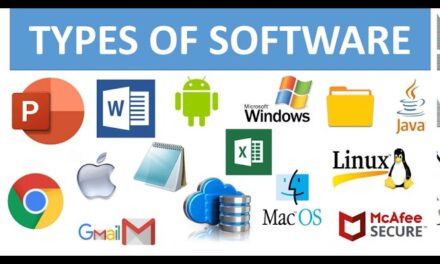
SOFTWARE
Posted by Sumerna Mahmood | May 5, 2024 | TECHNOLOGY | 0 |
"Software is a great combination between artistry and engineering"
Bill GatesSoftware refers to a collection of instructions, programs, and data that tell a computer how to perform specific tasks. It is a crucial component of modern technology and is used in a wide range of applications, from operating systems and productivity tools to entertainment and education software. Here are some key aspects of software:
Types of Software:
- System Software: This type of software is responsible for managing the hardware components of a computer and providing a platform for running application software. Examples include operating systems (e.g., Windows, macOS, Linux) and utility programs (e.g., antivirus software, disk cleaners).
- Application Software: Application software is designed to perform specific tasks or functions for end-users. This includes programs like word processors, spreadsheets, web browsers, and multimedia players.
- Programming Software: Programming software is used by developers to create, test, and debug software applications. This includes programming languages (e.g., Java, Python, C++) and integrated development environments (IDEs) that provide tools for writing and testing code.
- Embedded Software: Embedded software is specialized software that is embedded within hardware devices to control their operation. It is commonly found in devices like smartphones, digital cameras, and home appliances.

Development Process:
The development of software typically follows a structured process that includes the following stages:
- Planning: This stage involves defining the scope, requirements, and objectives of the software project.
- Analysis: During this stage, the requirements of the software are analyzed, and a detailed specification is created.
- Design: The design stage involves creating a blueprint for the software, including its architecture, user interface, and data structures.
- Implementation: This stage involves writing the actual code for the software based on the design specifications.
- Testing: The software is tested to ensure that it works as intended and meets the specified requirements.
- Deployment: Once the software has been tested and approved, it is deployed to the end-users.
- Maintenance: After deployment, the software is maintained and updated as needed to fix bugs and add new features.
Impact of Software:
Software has had a profound impact on modern society, transforming the way we work, communicate, and live. It has revolutionized industries such as healthcare, finance, and entertainment, enabling new ways of doing business and improving quality of life. Software has also played a key role in scientific and technological advancements, powering simulations, data analysis, and research.
In conclusion, software is a critical component of modern technology, driving innovation and shaping the way we interact with the world around us. Its development and use continue to evolve, with new technologies and applications constantly emerging to meet the needs of an ever-changing society.







